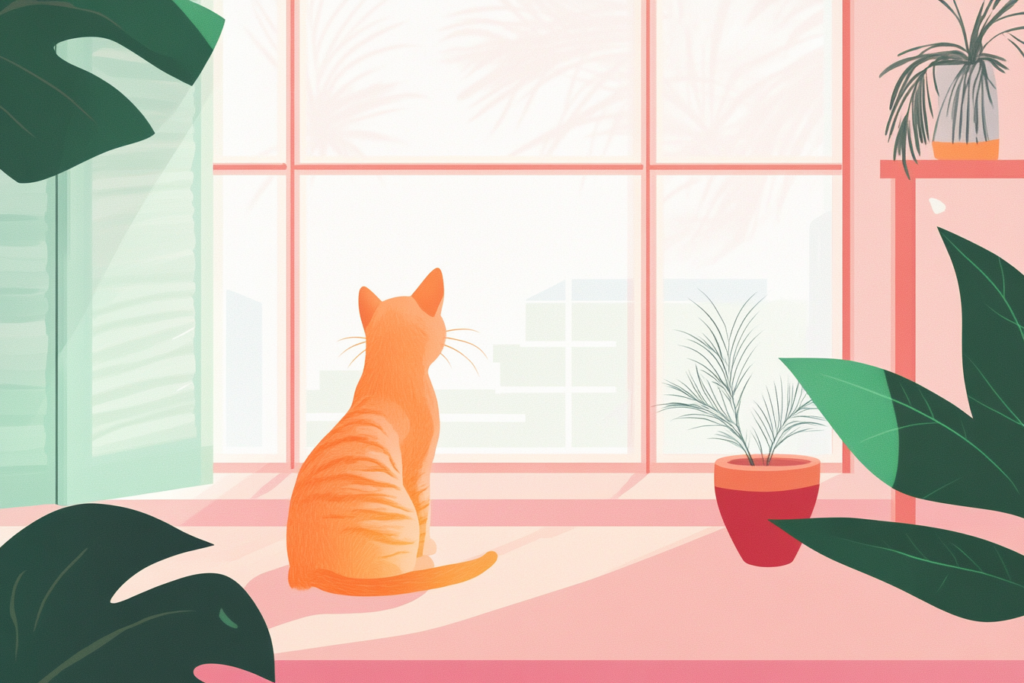Owning a pet brings unconditional love, companionship, and responsibility. However, pet owners also face the challenge of ensuring that their homes are secure for their furry friends and themselves. Pets often test their boundaries when their owners aren’t around and explore areas of the house that may be unsafe.
We will cover six essential security tips every pet owner should know to maintain a safe and harmonious environment, from securing your home against accidental pet escapes to preventing unwanted messes.
1. Secure All Entry and Exit Points
One of the most important aspects of keeping your home safe for your pet is ensuring that all main entry points are secure. Pets, especially cats and dogs, are known to dart out of doors and windows when they have an opportunity.
Doors and Windows
- Install pet-proof screens on windows to prevent your animals from pushing through, falling, or escaping.
- Consider a secondary barrier, like a baby gate, inside the house at commonly used doors or stairs to reduce the chance of your pet running outside when the door is opened.
- Smart locks can offer additional security, allowing you to control your doors remotely in case your pet sitter forgets to lock the door behind them.
Dog Doors
- Ensure it’s lockable, especially at night. Modern pet doors can be linked to your pet’s microchip, allowing only your pet to enter while preventing wild animals from entering.
- Regularly inspect pet doors to ensure they are in good condition, with no cracks or loose fittings that can let in drafts or other small animals.
Fences
- Inspect fences regularly for gaps, weak spots, or areas where your pet could dig under. Reinforce any places where your pet might be prone to digging, and consider using chicken wire at the base of the fence to prevent this.
- If your pet is an expert climber, ensure the fence height is adequate, or install inward-angled extensions to prevent them from escaping.
2. Secure Hazardous Areas
Just like childproofing, pet-proofing your home is essential. Several common household hazards might accidentally harm pets, especially curious ones.
Kitchens and Bathrooms
- Use childproof latches on lower cabinets where hazardous materials like cleaning supplies, chemicals, and sharp objects are stored.
- Store food in closed containers and out of reach, incredibly toxic food.
- Keep trash cans secured with lids or store them inside cabinets.
Living Areas
- Hide electrical cords or use cord protectors to prevent pets from chewing on them. Cats and dogs, especially puppies and kittens, are prone to biting cords, which can cause serious injuries or fires.
- Move houseplants to areas your pet cannot reach them, or research pet-safe plants. Many common houseplants, such as lilies and poinsettias, can be toxic to animals if ingested.
Garage and Yard
- Ensure all chemicals, such as antifreeze, motor oil, and pesticides, are stored in high cabinets or secured areas.
- If you use lawn treatments or fertilizers, make sure they are pet-friendly. Many chemicals used in yards and gardens can harm your pets if they walk on or ingest them.
3. Use Technology to Monitor Your Pets
Technology can help pet owners stay informed and keep their pets safe, especially when they’re away from home.
Cameras and Pet Monitors
- Pet cameras are a great way to monitor your pets’ behavior when you’re not at home. Some pet cameras even come with two-way audio, and treat dispensers to give them extra goodies when you are away.
- Home security cameras positioned at entry points can also help you monitor whether your pet has managed to escape the house or yard.
Smart Collars
- GPS-enabled collars allow you to track your pet’s location in real time. This is particularly useful for pets wandering outside or escaping the yard.
- Some smart collars include additional features, like activity monitors, which can help you monitor your pet’s overall health and well-being.
Smart Home Integration
- Use smart lighting or timers to ensure that your pet isn’t left in the dark if you’re coming home late.
- Automated feeders and water dispensers can keep your pet on a regular eating schedule, ensuring they always have access to fresh food and water.
4. Secure Your Home from Pet-Induced Damage

Pets, especially when they’re young or bored, can cause significant damage to your home. This doesn’t just impact your living space but could lead to accidents or injuries for your pets.
Furniture Protection
- Consider using pet-friendly fabrics, like microfiber, which is more resistant to scratching and clawing than other materials.
- Scratching posts and pads can help protect your furniture by giving your pet an alternative place to scratch.
Flooring Protection
- Hardwood floors can be easily scratched by pets, so consider placing area rugs or runners in high-traffic areas to protect the floor from claw marks. With our puppy, we taped them down so they wouldn’t move around either.
- Be mindful of the cleaning products you use on your floors. Some cleaning agents can leave residues that are harmful to pets, especially those who spend time licking or lying on the floor.
Chew-Proofing
- Provide ample chew toys (frozen Kongs full of peanut butter are great) to keep your pet entertained and prevent them from gnawing on furniture, shoes, or other household items.
- Puppy-proof your home by securing valuables and electronics out of your pet’s reach, especially during the teething stage.
5. Fire Safety for Pet Owners
Pets can unintentionally start fires by knocking over candles, chewing on cords, or nudging stove knobs. As a pet owner, I know that fire safety precautions are essential to prevent accidents.
- Stove Knobs: Install knob covers on your stove to prevent pets from accidentally turning them on.
- Candles and Flames: Avoid leaving lit candles or open flames unattended. Consider using battery-operated candles as a pet-safe alternative.
- Smoke and CO2 Detectors: Ensure that your smoke and carbon monoxide detectors work properly in your home. If you have a smart home system, link these to your phone so that you receive alerts in case of an emergency.
6. Prepare for Emergencies
Finally, consider your pet when preparing for emergencies, such as natural disasters or home accidents.
- Emergency Kit: Prepare a pet-specific emergency kit that includes food, water, medications, a leash, a carrier, and a first-aid kit.
- Escape Plan: Make sure your escape plan accounts for your pets. In case of a fire or other disaster, know how to quickly secure your pet and get them out of the house.
- ID Tags and Microchips: Ensure your pet always wears an ID tag and is microchipped with up-to-date contact information. These measures will increase the likelihood of a safe return in case it escapes during an emergency.
Protect your Pets
Keeping your home secure for and from your pets requires both planning and vigilance. By securing entry points, pet-proofing hazardous areas, using technology, and preparing for emergencies, you can create a safe environment that protects your pets and home. These steps will ensure that your pets can enjoy a happy and healthy life while minimizing the risk of accidents or damage.
You might also be interested in: Eco-Friendly Pest Control: Balancing Home Safety and Environmental Concerns




